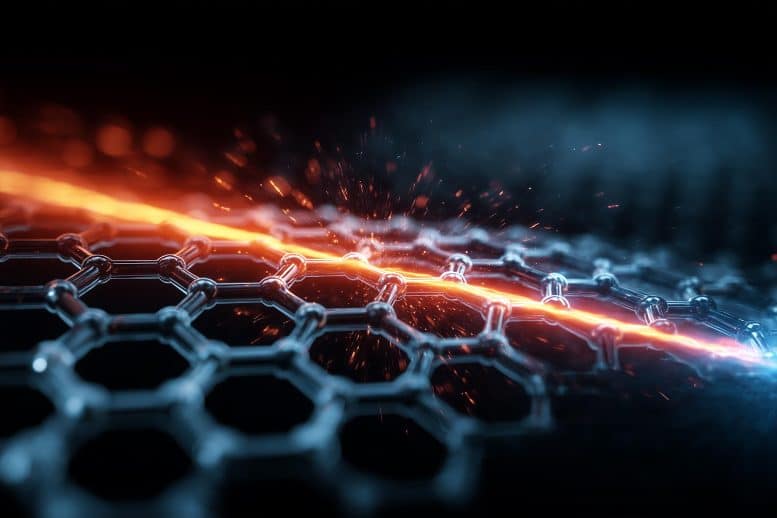In a surprising twist that challenges conventional materials science, researchers from the University of Nottingham, University of Warwick, and Diamond Light Source have developed a revolutionary method to create “designer defective” graphene. By intentionally adding structural flaws to the wonder material, they’ve unlocked enhanced properties that could transform everything from gas sensors to next-generation semiconductors.
The Problem with Perfection
Graphene, the single-layer carbon lattice renowned for its strength and conductivity, has always suffered from being “too perfect” for many practical applications. “While perfect graphene is remarkable, it is sometimes too perfect,” explains Associate Professor David Duncan, lead author of the study published in Chemical Science. “It interacts weakly with other materials and lacks crucial electronic properties required in the semiconductor industry.”
Traditional graphene’s atomic structure, a perfect honeycomb of six-carbon rings, makes it exceptionally stable but chemically “slippery,” limiting its usefulness in applications that require strong interactions with other substances.
The Molecular Key: Azupyrene
The breakthrough came from an ingenious approach: using a molecule called Azupyrene that naturally contains the desired imperfections. This molecule features rings of five and seven carbon atoms, the exact “defects” researchers wanted to introduce into graphene’s otherwise perfect six-ring pattern.
By using Azupyrene as a building block in a single-step growth process, the team created graphene films with precisely controlled defect densities. “By changing the temperature during growth, the amount of defects in the final material could be controlled,” notes Professor Duncan, giving researchers unprecedented command over graphene’s properties.
Defects as Features, Not Flaws
The intentionally introduced imperfections transformed graphene’s behavior in remarkable ways:
- Enhanced “Stickiness”: The defective graphene binds more strongly with other materials, making it more effective as a catalyst
- Improved Sensing: The altered surface chemistry enables better detection of different gases for sensor applications
- Tunable Electronics: The defects modify graphene’s electronic and magnetic properties, opening doors to semiconductor applications
“Usually defects in material are seen as problems or mistakes that reduce performance,” says Professor Duncan. “We have used them intentionally to add functionality.”
From Laboratory to Real-World Devices
A crucial technological achievement was made by researchers at the Graphene Institute in Manchester, who demonstrated that defective graphene could be transferred onto various surfaces while retaining its engineered imperfections. This bridges the gap between laboratory curiosity and the practical integration of devices.
The international collaboration, spanning the UK, Germany, and Sweden, employed advanced microscopy, spectroscopy, and supercomputer simulations to verify the atomic structure and properties of their designer graphene.
A New Paradigm for Materials Design
“This study is a testament to what can be achieved through international collaboration and the integration of diverse scientific expertise,” says Dr. Tien-Lin Lee from Diamond Light Source. The team combined atomic-scale imaging with computational modeling to understand exactly how the defects influence graphene’s behavior.
Professor Reinhard Maurer from the University of Warwick adds: “By carefully choosing the starting molecule and the growth conditions, we’ve shown it’s possible to grow graphene in which imperfections can be introduced in a more controlled way.”
The Future of Imperfect Materials
This research represents a fundamental shift in how scientists approach material design. Rather than pursuing perfect crystals at all costs, researchers can now strategically introduce “designer defects” to tailor materials for specific applications.
The implications are vast: from more sensitive environmental sensors and efficient catalysts to novel electronic devices that leverage graphene’s newly acquired magnetic properties. By embracing imperfection, scientists have opened a new chapter in graphene’s already remarkable story, proving that sometimes, the most perfect solution is intentionally imperfect.
This research demonstrates that in the world of advanced materials, strategic imperfection might be the key to unlocking truly extraordinary capabilities.


